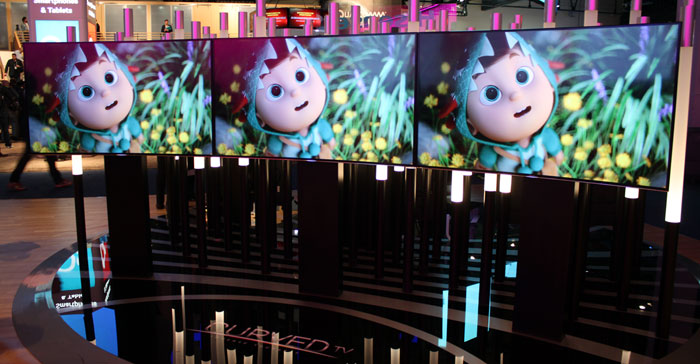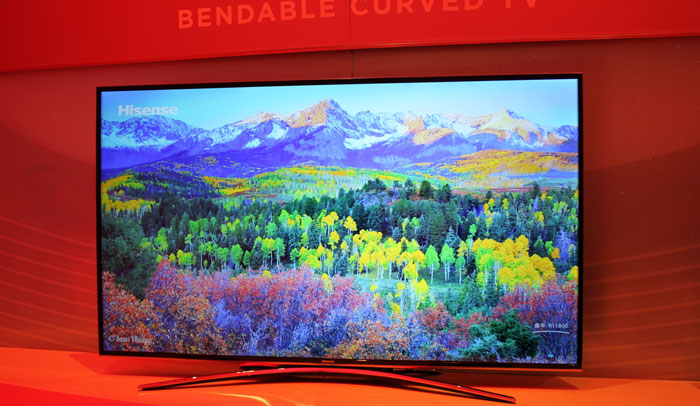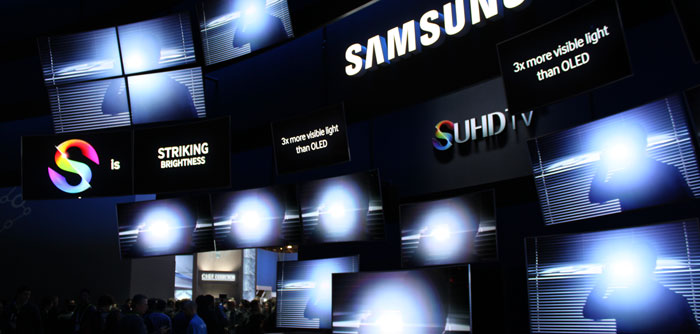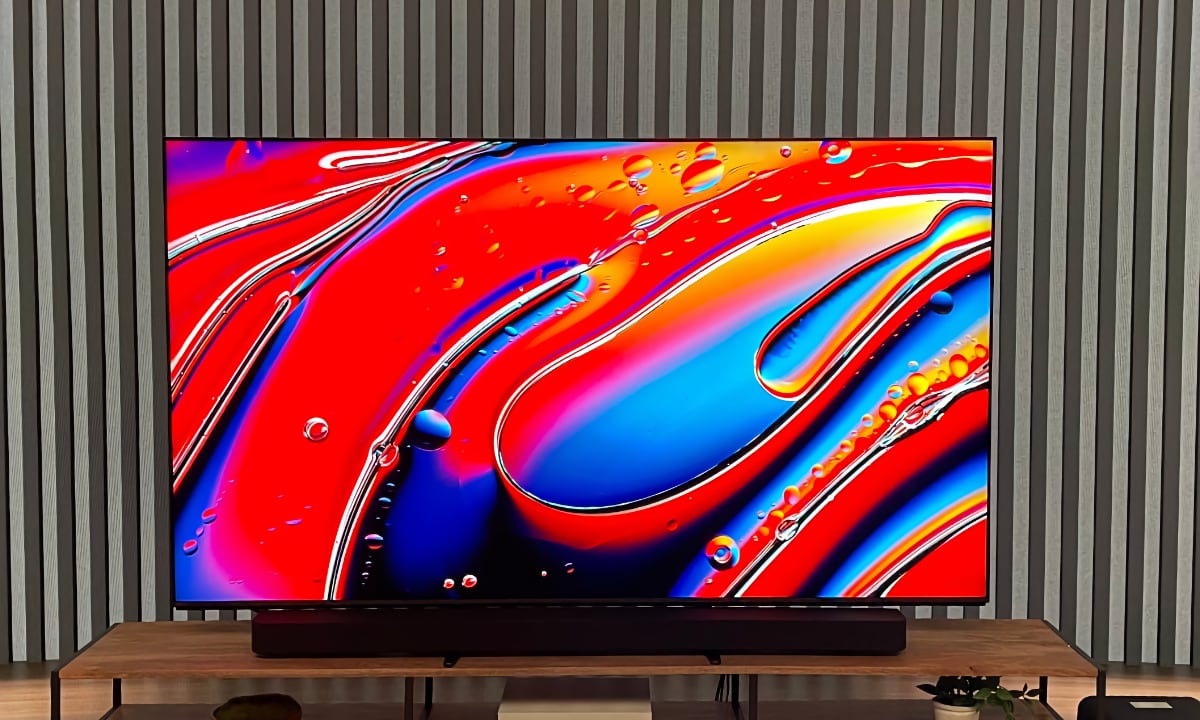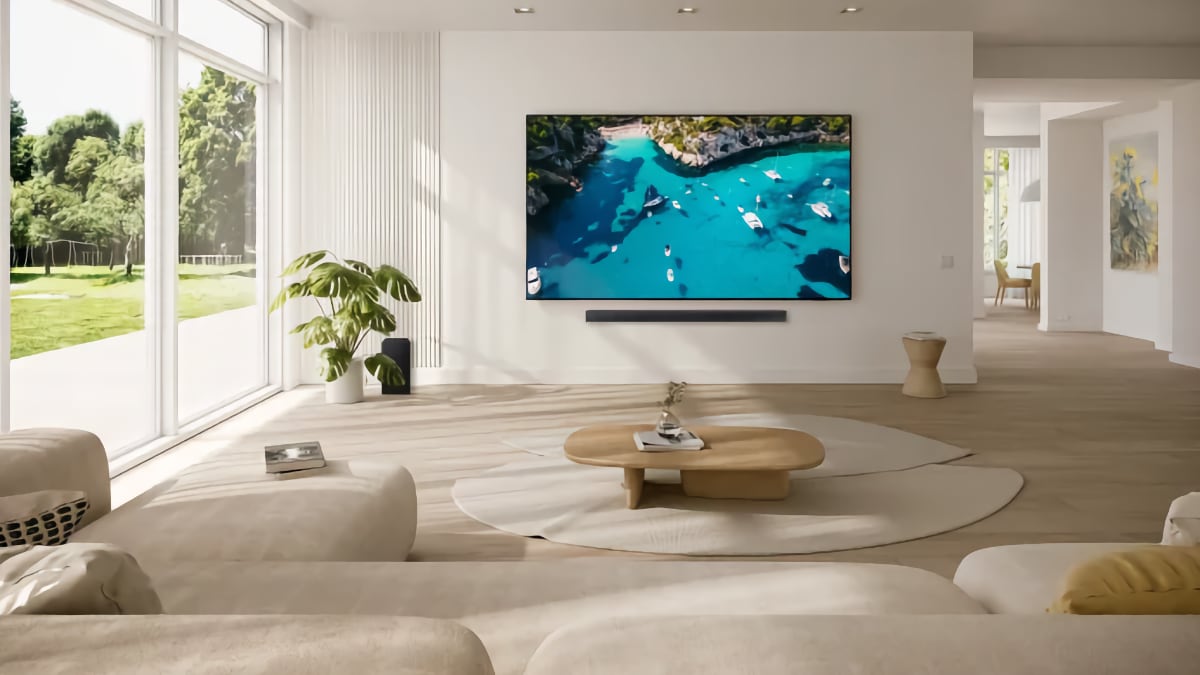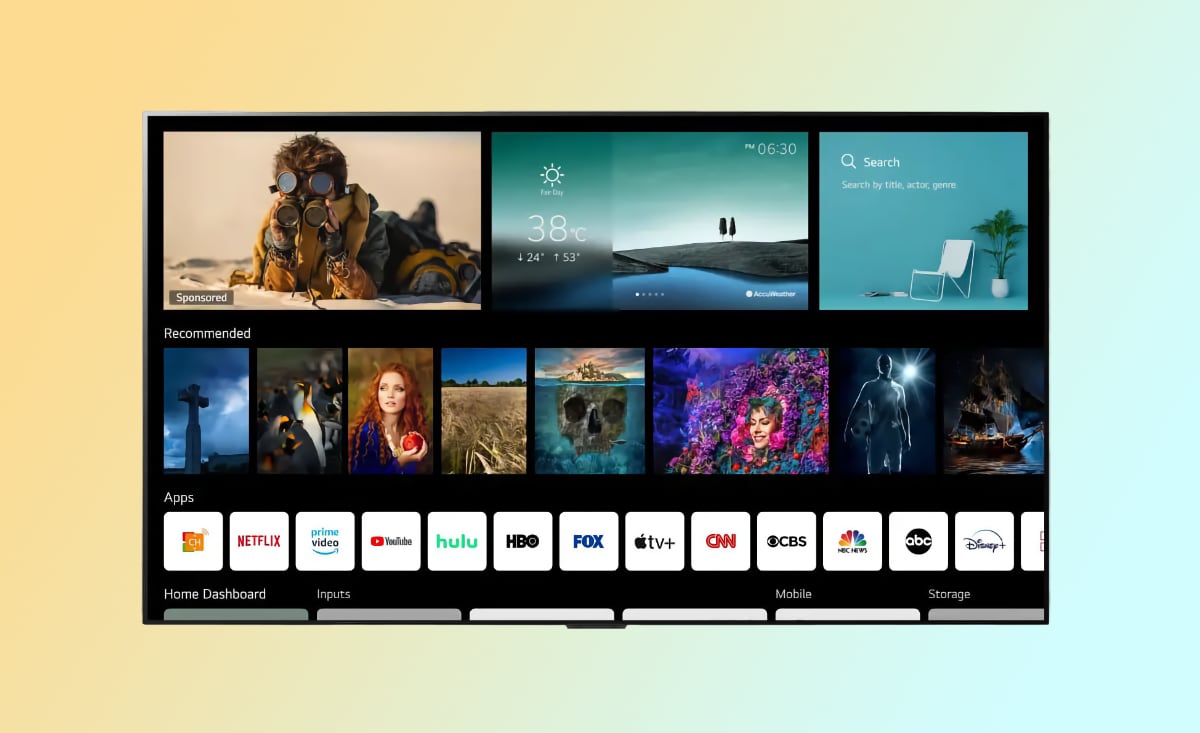Trends: curve, quantum dot, OLED, 3D & total confusion
We are back from CES 2015 and in a series of articles we will take a look at the trends that will shape the TV market in 2015 and beyond. This time we take a look at TV hardware. In 2015, we will hear more about quantum dots, curves, OLED and of course Ultra HD. We will hear less about 3D. But the overall trend is total confusion.
| Trends: In 2015 software will eat TVs |
| Trends: Ultra HD is about better pixels, not just more |
No clear direction for TVs
After having looked at new operating systems in TVs and content in an Ultra HD context, we are taking a look at the trends in TV hardware. And it is a mess.After a few days at CES 2015, you quickly realize that TV hardware is moving in many different directions. The TV manufacturers do not seem to agree on anything. CES 2015 was more chaotic than ever. The only thing that the industry appears to be pushing in unison is Ultra HD, which they all agree is the natural step after Full HD. But in an effort to stand out from the crowd every TV manufacturer adds things on top. Everywhere you looked you saw buzzwords such as curved, OLED, bendable, HDR, beyond 4K, 8K, glassesless 3D, quantum dots, SUHD etc.
3D, on the other hand, is in a kind of limbo. The industry has not completely forgotten about 3D, but there are no real initiatives to revive it either.
After the CES circus ended we were left with a sense of confusion. Research and development is always great, but these days it appears that TV manufacturers just throw mud against the wall to see what sticks, for everyone in public to see.
If you look at the market in a historical perspective, flat panel display technology has been following a fairly straight line from small displays to larger PC monitors, then TVs and in recent years large-size TVs. However, in recent years we have also seen how display innovation to some degree has been driven by the mobile industry. And we have seen how display technology has enabled the creation of impressive virtual and augmented reality concepts. Is that why TV manufacturers are so divided on the future direction?
Or is it because almost every TV manufacturer backed a 3D trend that failed? A unanimous industry was not enough to make 3D a hit, and even though some of them still showcase obscure glasses-free 3D TVs, it is not a major selling point any longer.
No, the confusion appears to originate somewhere else entirely. Most manufacturers have simply stopped producing TV panels and hardware, which means that they are building TVs from building blocks. Most of them are dependent on other companies for panels, parts, software etc. They have lost control of the direction. So instead they add all these gimmicks on top – without consideration.
To understand this it might be worth concentrating on the basics of display technology instead. Around 10 years ago, TV manufacturers placed their bets. Some chose plasma, but most chose LCD (“LED” is LCD). Over the last decade, consumers have been able to buy TVs based on one of two display technologies, LCD or plasma, and it has been great for competition. But over the years, the industry has also consolidated, and we have seen how several manufactures have quit production and even fundamental research.
Plasma disappeared in 2014, but OLED is ready to take over as the display technology of the future. It promises major picture quality improvements, but perhaps more importantly; it will enable entirely new types of products and implementations based on its paper-thin, truly flexible, and transparent properties.
A play for time
There is genuine enthusiasm about OLED among industry players, as well as consumers. Make no mistake; even the manufacturers who are incapable of producing OLED displays are working hard to make it happen, but for obvious business reasons they are trying to shift focus away in the short term.Still, the real intentions are revealed by the fact that Sony, Samsung and Panasonic all showcase amazing OLED displays at trade shows over and over again. The Chinese manufactures proudly exhibit LG’s OLED panels as if they were their own. "OLED picture quality" is already the benchmark in the industry, evidenced by how Samsung at CES 2015 was comparing its new S'UHD TVs (LCD TVs) with OLED – as if the world’s largest TV manufacturer was the underdog.
Instead, most TV manufacturers are trying to keep LCD alive with Ultra HD, curved form factors and quantum dots, but all these things are building blocks on top of a display technology of the past. LCD is not suitable for products of the year 2020. OLED is, but not just because of the amazing picture quality characteristics. OLED will enable entirely new types of products. The Japanese know it, the South Koreans know it, and the Chinese know it.
Rockets are fired, seemingly in random directions with no clear goal
On the other side of the fence, we stand here as consumers asking whether it would be an idea to actually meet consumer needs? 3D was pushed out by the industry mostly to raise prices, but was rejected in the living rooms. Curved TVs are being pushed out, initially with promises of amazing “immersive” qualities, but later a more subtle “hey it is just a design choice and design is a matter of taste”. That is probably true, but most data indicate that curved TVs too are being rejected in the living rooms. Smart TVs have never really been smart, and every 2 years TV manufacturers replace the platform and fundamental hardware. What about quantum dots? They can potentially solve a real problem, but is the timing wrong? The industry prefers to call all of these things innovation, but the word gimmick is quite common on the other side of the fence.Over the years, the press has begun asking why all these rockets are fired, seemingly in random directions with no clear goal. The answer is often found deep in the organizational structures of the companies. When you learn that the companies are divided into groups with no cross-communication, and when you learn that the groups are rewarded whenever one of their features (or gimmicks) are integrated into the final product – no matter if the basic problem is already solved by a different technology – you start to understand why these seemingly random decisions are made over and over again. It also explains why many TV manufacturers would rather develop an in-house Smart TV platform and replace it often.
Free choice is of course great, but the free choice ceases to exist when you learn that the "gimmick" - be it 3D, curves or something else – has spread to almost every model of the line-up. And the only reason that there are so many models is to satisfy every single retail chain; to provide each shop with an exclusive model with a unique model number, making it impossible for the consumer to compare prices.
What about consumer needs?
So, what has actually driven mainstream consumer demand for new TVs over the years? All signs point to no-nonsense factors such as "good enough" picture quality, size and thinness (and content outside of a hardware context). There are signs that a great user experience could be added to the list, but we have yet to see Smart TV manufacturers really test this assertion.Not only TVs sold in stores come with these gimmicks. Some research teams are obsessed with gimmicks, too, it seems. Why else do we see TVs that can bend a few degrees on command with price tags that are out of this world? And why do TV manufacturers showcase incredibly bad glasses-free 3D TVs? These concepts are clearly not made with the consumer’s needs and wants in mind. What problems do they solve?
In a larger perspective, most of the trends in TV hardware right now are driven by what manufacturers want, rather than rooted in consumer needs. There are certainly some underlying trends that harmonize with the wishes of consumers, but in the name of profit, many manufacturers are trying to blur the picture. This is of course the game of competition, but as consumers we should not lose our consciousness of what really matters and what is just marketing noise.
At times big corporations appear to lose orientation, and the collective economic downturn in the TV industry could indicate that consumers are not willing to pay extra for an expensive TV with a few gimmicks added on top. Maybe some of them could find inspiration in one particular PC/smartphone company that follows a completely different mantra that seems to resonate with a lot of consumers; enough to make many of them buy a product annually.
CES 2015 was the most chaotic show in years. A TV industry, which has followed a clear route of hardware improvements for years, suddenly seems to move in many different directions without asking “why?”. At the same time, there are signs that software could be a more important driver for TV sales than hardware in the future.
But the overall trend is total confusion.
| Trends: In 2015 software will eat TVs |
| Trends: Ultra HD is about better pixels, not just more |


